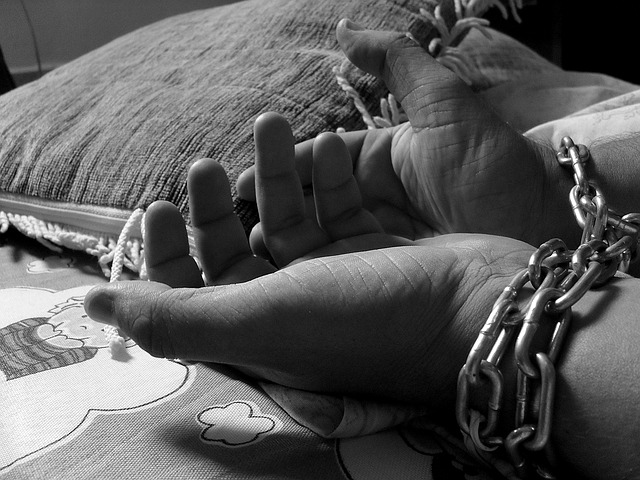Opinion | Human trafficking threatens our society
Photo courtesy of Sammisreachers/Global Panorama/Flickr
Columnist Maggie Knutte emphasizes the dangers of human trafficking with women and children being the most vulnerable.
May 31, 2022
Last updated on Oct. 21, 2022 at 03:45 p.m.
In the United States, slavery may be remembered as an abolished practice of the past, but it is still happening here today. It has been carried on through a new, illegal outlet: human trafficking.
The Department of Homeland Security defines human trafficking as “the use of force, fraud or coercion to obtain some type of labor or commercial sex act.” Taking the definition a step further, the National Human Trafficking Hotline describes human trafficking as “modern-day slavery.”
Just looking through the news, I have come across countless stories — some just hours old — updating the world about ongoing human trafficking instances. For example, an incident occurred on May 26, only a state away in Oshkosh, Wisc. Slightly south of Green Bay, the area’s local ABC channel covered the ongoing inspection of a spa where victims and evidence of human trafficking have been discovered.
The FBI breaks down human trafficking into three forms. While all three involve the use of “force, fraud, or coercion,” they have different, inhumane purposes.
Get The Daily Illini in your inbox!
Historically creating the highest number of victims, sex trafficking forces victims to “engage in commercial sex acts.” Children and women are often the most vulnerable to this type of trafficking. These victims may suffer serious trauma, leading to the development of post-traumatic stress disorder, sleeping disorders or eating disorders. Along with reproductive problems, victims may also contract infectious diseases from unsanitary living environments.
Labor trafficking, much like it sounds, forces victims to perform labor or service. This type of trafficking is the most similar to the historical, unethical practice of slavery here in the United States. It falls into two categories: bonded labor and forced labor. Bonded labor is when the victim is in debt to the trafficker, while forced labor is when the trafficker violates the victim’s free will.
Lastly is domestic servitude, in which the victims are often held in a household and “appear to be domestic workers,” like nannies and housekeepers but are really being controlled through force. People most likely to be subject to this type of trafficking are immigrants or people of color. They make up 65% of all domestic workers in the United States. Immigrants are often blackmailed by traffickers, who threaten deportation when the immigrants do not yet have full citizenship.
In 2020, there were 10,583 cases of human trafficking reported in the United States. This concerningly high number puts many at risk of trafficking, especially college students.
The Campus Safety Magazine published an interview with Maraya Lasinsky, a former adviser to the DHS, about human trafficking on college campuses. She noted that many college students are living independently for the first time — some being international students with a language barrier — and can be more susceptible to threats or coercion.
College, as everyone knows, is very costly. Students are in debt, struggle to find housing or experience other financial difficulties in universities across the country. Traffickers will often target these students and blackmail them with the knowledge that they are financially insecure.
Gaining the trust of their victims, traffickers will later exploit them through details they learn over time. Another thing that puts college students at risk is addiction to drugs or alcohol. This informative article produced by the Department of State explains the relationship between trafficking endangerment and addiction.
When you see a victim of trafficking, you may notice abuse, fear and an inability to speak out. Remember, the trafficker will often control their victims. Other signs are available on the U.S. Department of State website.
Speaking up when you see suspicious activity is important. If you suspect human trafficking is occurring, call one of the numbers on this page to report it.
Our government law enforcement programs are working to end human trafficking. Illinois itself has made several legal efforts to combat human trafficking. It has several task forces formed to combat human trafficking and funding opportunities for victims. But change will not happen overnight.
Action from the public is just as necessary. The Dressember organization applies fashion to bring attention to trafficking victims. Members of the organization wear nice clothing in the month of December as a way to fundraise to fight the issue. If you see something, say something — you might end up saving someone’s life.
Maggie is a freshman in LAS.






